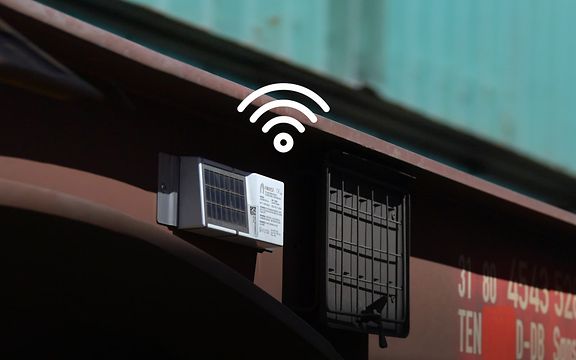DB Cargo is turning to wagon intelligence to help shape the future of rail freight transport. What is the motivation for this?
Wagon intelligence (WI) is part of our automation and digitalisation programme (AAD), our plan to make DB Cargo fit for the future. The project makes it possible to generate, analyse and use data on rail freight transports. The basis for this is the ongoing drive to equip our freight wagons with sensor technology and telematics. There are many aspects to wagon intelligence and many starting points for further developments in the future. Essentially, we need to take the data we obtain and integrate it more deeply into our systems. This will enable dispatchers to take real-time decisions and actions, for example. That can save a lot of time.
What do customers get from these digital additions to our freight wagons?
WI data gives us more transparent information about individual transports so that downstream logistics processes are easier to manage. This benefits our customers and employees alike. For instance, we can control inflows more precisely and take into account whether a customer siding currently has capacity for additional wagons. The specific use of the WI data depends on a number of questions. What do the customers' logistics processes look like? What role does the location of the freight play? Where does transhipment take place? With WI data, we can improve the quality of consignment tracking. The information from WI forms a basis for the e-services in link2rail. Learn more about our digital platform, link2rail.
What does refitting the wagons involve? What exactly are you installing?
The equipment depends on the industry and on the customer's requirements. Essentially, we equip every wagon with a basic telematics device, which includes a communication unit, power supply via a solar panel, GPS and impact sensors. We need the solar panel in order to be able to send information every ten minutes. Depending on the fleet, we equip wagons with a full/empty sensor in order to dispatch empty wagons faster, for example. And finally, we equip some of the wagons with temperature and humidity sensors. This is important when transporting coils, for example, in order to minimise the risk of corrosion. To date, we have fitted over 60,000 wagons with the digital equipment.
Gerrit Koch to Krax heads up DB Cargo’s wagon intelligence project. Copyright: DB Cargo
How does WI work in everyday use?
The wagon and its telematics device are connected by a specially developed app. The wagon data is sent to the DB Cloud via the mobile network. It is combined in the cloud with other business data on the type and condition of the wagon. We obtain this data from our existing systems, such as the dispatching and maintenance systems. In the Assets & Technology organisation at DB Cargo, we pool the relevant data from day-to-day operations centrally at a single location in the Asset Intelligence Centre (AIC). The Track & Trace function from link2rail allows status messages and the tracking history to be viewed as required. The data can be integrated into external systems via an API (Application Programming Interface), linked to the customer's information and thus used for subsequent processes. This facilitates management of the logistics chain and reduces the workload for all those involved in the process.
How do you use the WI data internally at DB Cargo?
WI data and the digital transformation help us to improve internal processes. We use sensor technology and telematics solutions in dispatching and customer service, for example. Analysis tools help our traffic planners to look at traffic in the past and to optimise it for the future.
Does data transmission also work in other countries?
We operate across borders in Europe and have all the information about the wagons' locations at our fingertips. This simplifies logistics planning for customers.












